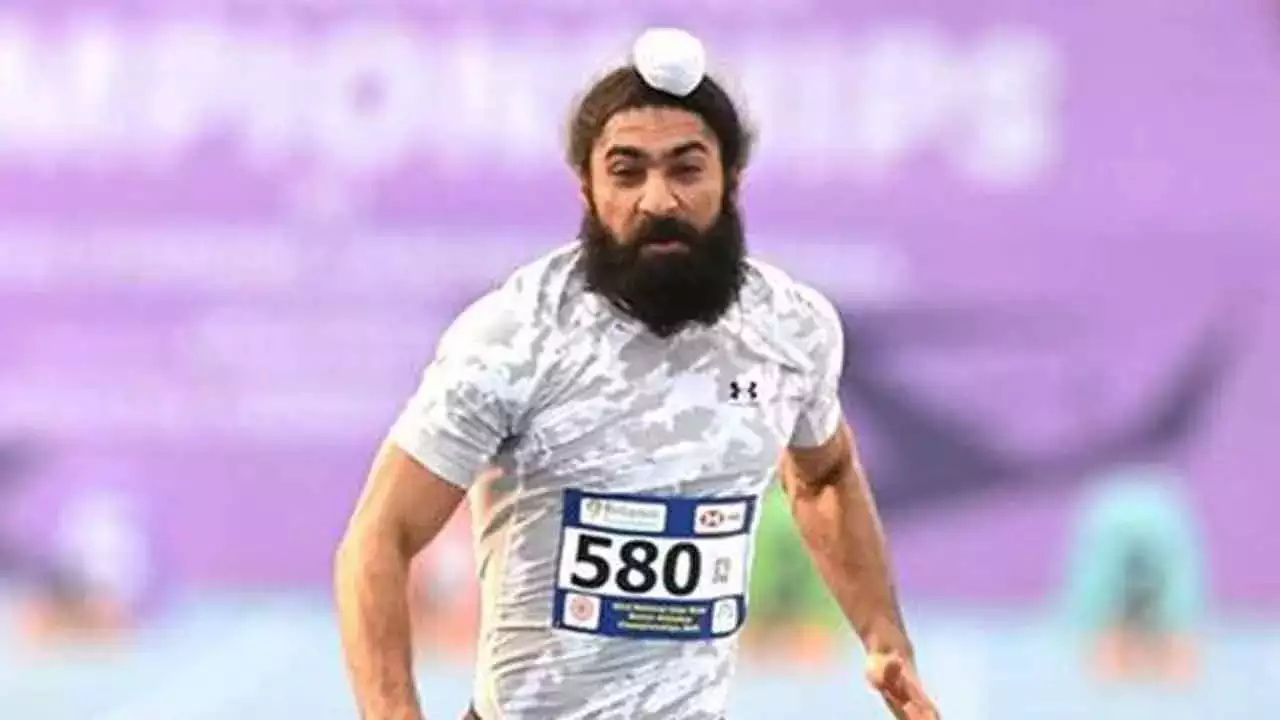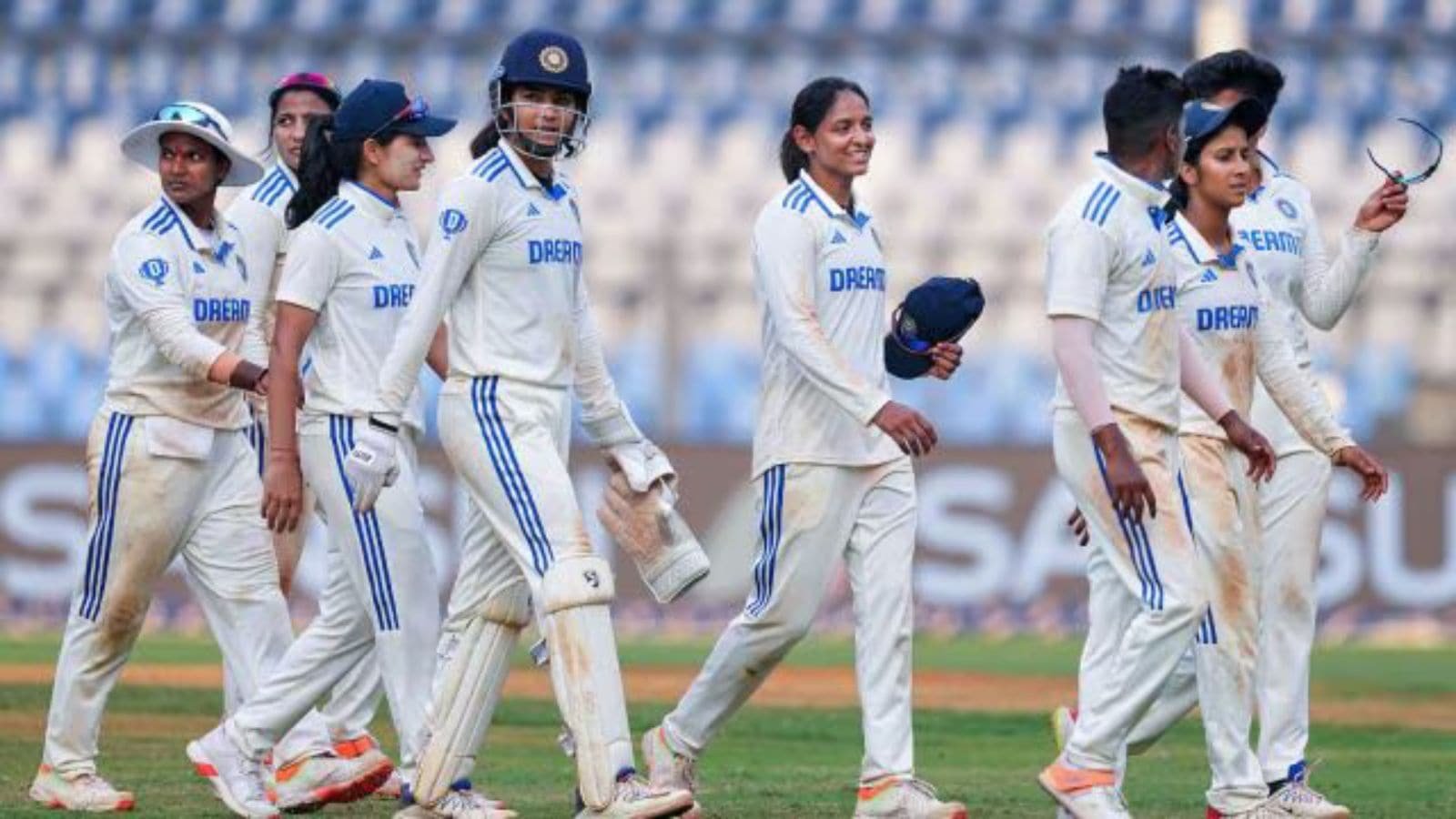Reflecting on his journey, India’s fastest man, Gurindervir Singh, said quietly, “I have been training for nearly 10-12 years to break the national record, but my primary target is to run under 10 seconds.”
At the Indian Grand Prix 1 in Bengaluru on Friday, Gurindervir, a forceful and aggressive runner, broke the men’s 100-meter national record with an incredible 10.20-second sprint.
The former record-holder, Manikanta Hoblidhar, ran with him, and both of them qualified for the Asian Athletics Championships.
Gurindervir’s journey to this accomplishment was anything but easy, though. Four years prior, in 2021, at the age of 21, he had achieved his previous best of 10.27s.
His path was fraught with obstacles, including interrupted training, health issues, and subpar facilities.
Gurindervir Singh talked candidly about his ascent to the top in an exclusive conversation with The Bridge.
Overcoming adversity
The last few years have not been easy, the COVID-19 pandemic disrupting his training. He, like many athletes, was forced to make do with limited facilities.
He recounted a particularly trying time in 2021 while residing at the Punjab Institute of Sports in Jalandhar, where he struggled to make progress due to subpar living conditions, minimal recuperation resources, and poor nourishment.
We remained in a facility that was undergoing renovations because we were not permitted to utilize the sporting facilities in Patiala. We lost power when the transformer caught fire one day,” he said.
Food proved to be another problem. He frequently ate bad food from wayside restaurants, which resulted in intestinal problems that may have derailed his promising career.
I once shed twelve kilograms in eight or ten days. He disclosed, “My father even advised me to return home and think about quitting sprinting.”
Nevertheless, Gurindervir persevered.
Months of focused physiotherapy, strength training, and meticulous conditioning were necessary for the arduous rehabilitation process.
He acknowledges that his coach and support team helped him get through this stage without pressuring him to get back to full fitness too quickly.
He remarked, “I knew I had to trust the process, even though it was frustrating at times.”
The transition to elite training
Gurindervir’s journey to becoming country’s top sprinter saw a major shift when he moved to the Reliance Foundation in Mumbai. There he trained in an ideal environment, surrounded by elite athletes and modern training facilities.
“I returned to Punjab following the Interstate Championships in July of last year, but my training was erratic because of the rainy season. There was a huge change in training when I returned to Mumbai a few months later.
One important factor was the competitive training environment.
“I wanted a place where people would challenge me.” My training partners, Amlan Borgohain and Manikanta, are both excellent athletes. Amlan is a 200-meter national record holder who is always driven to defend his championship because of his exceptional endurance and weight training. I am forced to push more when they push themselves.
Gurindervir found it difficult to get used to the new training system.
By the time the others in Mumbai had completed their warm-up, I would have completed my entire workout in Punjab. It was just what I needed, yet the intensity was quite different. We used antiquated Russian training regimens back at the national camps, which my coach Happy Singh was familiar with. However, our instructor here tries out fresh methods to keep us in peak shape,” he remarked.
Building towards the record
Gurindervir first ran 10.27 seconds in 2021, but it took him four years to reach 10.20s.
His preparations for the record-breaking race were meticulously planned.
His comeback began when an ayurvedic remedy improved his digestion.
“After getting better, I did well at the Interstate Championships, the National Games, and the Inter-Federation Cup. After I relocated to Mumbai, everything began to come together. I would have made much more progress if I had arrived here sooner,” he remarked.
He was in excellent shape before the competition because to his training in Mumbai.
“My training sessions were going well, and the preparations were proceeding well. In several phases, including 30m, 50m, and even 250m, I was setting personal records. “I was constantly reminded by my coach, James Hillier, that I just had to duplicate my training performances in the race,” he said.
He routinely recorded 10.1 and 10.2 seconds over 100 meters, 12.3 seconds in 120 meters, and 27 seconds flat in 250 meters during his practice sessions.
Because of early-season training loads, he was not at his best, but he felt he could go much faster.
“I want to run 10.1 this season. I could have performed the last step more effectively if I had examined my race. I am certain that I can reach 10.15s or even faster when my body heals and I gain more lean muscle.
Overcoming pre-race challenges
But getting to the starting line was not without its challenges.
During a 40-meter sprint three days prior to the tournament, Gurindervir felt soreness and tightness in his hamstring.
Despite his coach’s advice to take a step back, he persisted since he did not want to appear weak during training.
“I was concerned that I might pull my hamstring during the race, but I ran in spite of the pain,” he stated. He was convinced by his physiotherapist that it was only an overstretch, and cupping therapy was used to ease the tension.
The worry about getting hurt persisted even during the race day warm-up.
I took particular care to avoid exerting myself too much. I was aware that I could challenge my body to its limits when I ran without hesitation and at maximum fitness.
He still managed to run an impressive 10.20 seconds. “I feel I would have broken the record by an even greater margin if I had not been worried about my hamstring.”
Mind games and race execution
Gurindervir had a clear target in mind before stepping onto the track.
“I told my coach that I wanted to clock 10.2s. He said he would be happy with that. Knowing I had his confidence, I pushed myself to achieve it.”
While most sportsmen would celebrate after a race, he had to decide whether or not to run the 200-meter event.
“My coach frequently engages in mind-games. He gets us off lightly if our reps are good; if not, we have to finish the entire workload. I informed him I did not want to run the 200m after my 100m performance, and he agreed, stating that I had earned the respite.
His focus is still on the 100m even though he has competed in the 200m before.
“I think I will be more ready for 200-meter races next year, but my coach wants me to run more of them. I might compete at the Nationals, the Interstate Championships, or a Grand Prix event [in the 200m] this year,” he stated.
Psychological strength and future goals
Mental resilience has played a significant role in Gurindervir’s journey. He works with sports psychologist Disha, who has helped him overcome self-doubt.
“There were times when I questioned whether I could keep up, but she helped me organize my thoughts and stay confident,” he added.
Born within a sporty family, Gurindervir’s father was a national-level volleyball player.
“I won school races and was usually quick. I recall thinking that I wanted to run like Usain Bolt when I watched him set the world record in 2008.
In the sixth grade, he started running. He joined coach Happy Singh’s team in Jalandhar by the tenth grade, and the rest is history.
With an event in three weeks, the Asian Championships, and the World University Games in July, Gurindervir has a full season ahead of her. “I want to win a medal, and these are my main goals.”
The fastest man in India is currently concentrating on improving his sprinting technique, avoiding injuries, and moving one step closer to his goal of breaking the 10-second barrier and creating history on the international scene.






